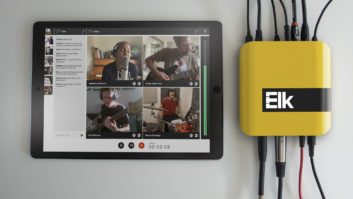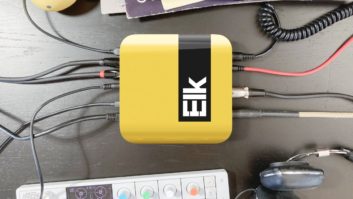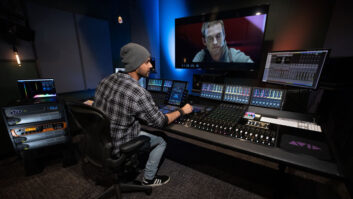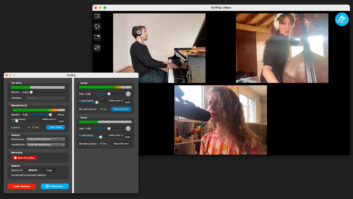
Stockholm, Sweden (November 12, 2020)—Practical real-time remote music creation and collaboration took a step closer to reality recently when Stockholm-based developer Elk began posting videos made by beta-testers of its Aloha service. Conceived for use over high-speed internet and, ultimately, over 5G networks, Aloha combines ultra-low latency audio with a video chat user experience and is scheduled for a 2021 release.
The effect of latency—the time it takes for a signal to pass through a digital audio system and back to the originator’s ears—varies from one individual to the next and according to musical content. One rule of thumb is that latency becomes noticeable at 15 to 30 milliseconds, but performers are often more sensitive, and some find that more than 7mS is too much to handle and remain in sync (for example, U2’s Bono favors an analog in-ear monitoring path for that reason).
“We knew there would always be limitations; the speed of light is still there,” says Elk CEO and co-founder Michele Benincaso over Zoom from Sweden, “but there are things to make it better and there are different kinds of experiences. If we want to have an in-the-same-room experience for a pro musician, with good fiber, you’re looking at around 1,000 km,” or about 620 miles, maximum, between participants.
Benincaso’s path to developing Aloha was somewhat circuitous. Born in Italy, he has a master’s degree in violin making. Yet despite such a decidedly analog beginning, “I’ve always been fascinated by technology, and I had a dream to put technology and musical instruments together,” he says.
His original goal was to create the guitar of the future. “We had a vision to bring the guitar to a level where you can give the musician access to more sounds and a new way of expression.”
Aloha Promises Real-Time Remote Music Creation
About six years ago, Benincaso met a professor from Stockholm’s Royal College of Technology, one of Elk’s co-founders, who introduced him to the potential of modern wireless communications and the Internet of Things. In pursuit of his original vision, that led ultimately to the development of the Linux-based Elk Audio OS.
“The magic is that we can run it on a general-purpose CPU; we use Raspberry Pi, but we can do analog-to-analog in one millisecond. There’s [typically] no way of getting that without a very expensive computer and a very expensive audio interface.”
Through the company’s relationship with Steinberg, Elk has already ported over 500 VST plug-ins to its OS. The Elk Audio OS is at the core of the company’s Sensus smart guitar and other products, and it also enabled the building of a custom solution—in combination with Fishman and Arturia—for Muse frontman Matt Bellamy to generate Prophet V synth sounds from his wireless guitar.
It is the Elk Audio OS within in Aloha, which will ship with a small stereo audio device and an Ethernet cable, that makes real-time remote collaboration feasible. “There are technologies that work on a LAN, like Dante, but the internet is another story,” Benincaso says. “What Aloha technology in the device does is optimize the audio to be sent to the internet. Aloha considers packet drop, distance and jitter.”
Jitter can be worse than latency, he says. “In an orchestra, you can have 30, 40 milliseconds between one side of the orchestra and the other, but it’s consistent, so musicians adjust. What is harder is unpredictable latency—jitter. Aloha, based on the network conditions, adapts to constantly deliver the most consistent latency. And we use other technologies to maximize the audio experience for the user.”
No less important is the user experience, he says. “It’s a video chat app that you can access on a computer, phone or tablet. It’s important to have the visual feedback from the other musicians and also for recording and livestreaming. Once the device is connected, you will see a list of people connected. Pick who you want to play with, call him or her and you’re ready.”
An early version of Aloha was previewed by Swedish telecom company Ericsson at the 2019 Mobile Congress in Barcelona, where a band performed from two locations in the first live demo of the service over 5G. With 5G, processing power in the cloud will eliminate the need for a local CPU, RAM or dedicated audio interface. For Aloha, he says, “Edge computing is where you get ultra-low latency, so there will be a major impact when 5G comes.”
Elk has been flooded over the past several months with suggestions for where Aloha might also be employed, such as in music education, says Benincaso, so the company has now adjusted its focus and put more resources behind launching the service. However people use it, he says, “We let musicians connect in the shortest time possible with a seamless experience.”
Elk Audio • www.elk.audio







